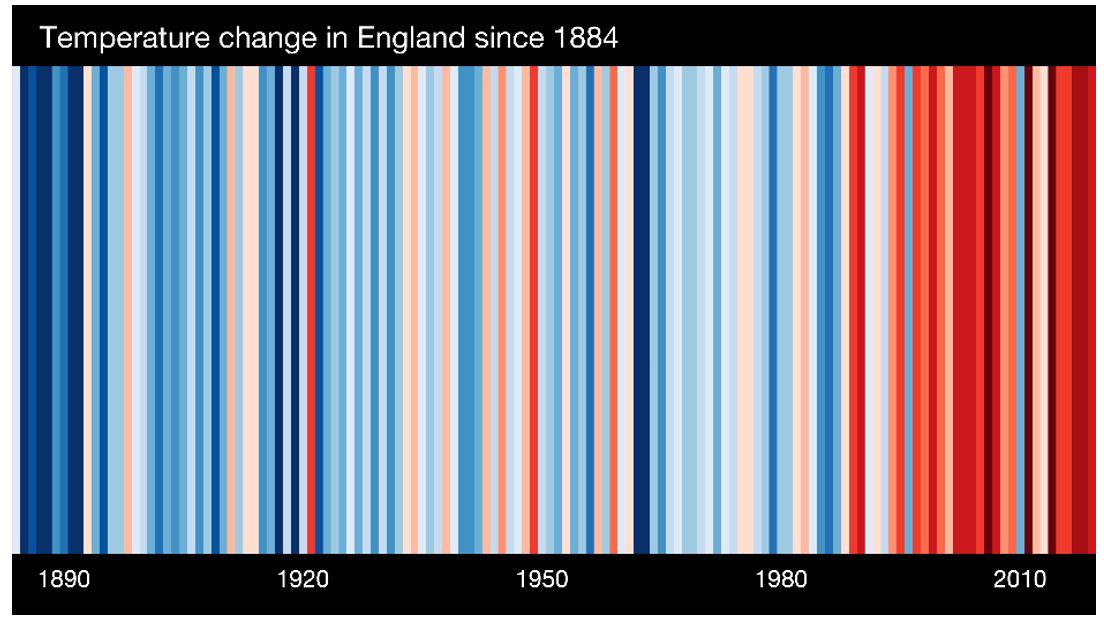7 Thinking more widely
People enjoy living and working against the backdrop of Dorset’s beautiful countryside. The historic environment is an important part of this; it contributes in several ways and has the potential to contribute more.
7.2 People in Dorset today
The population of BCP is 395,780 of which approximately 22% are over 65 years old and of the Dorset Council area 376,480 of which approximately 28% are over 65 compared with just over 18% in England and Wales (Office for National Statistics mid-year estimates 2018). 4.5% of residents of the Dorset Council area are Black and Minority Ethnic and 3.5% of BCP residents, compared with 19.5% of the country as a whole.
Both areas show a net decline in population in recent years, and this is projected to continue, with an increasing proportion of the population over 65, and an increasing proportion of them over 85 years old.[1] Probable effects of this ageing population include increased demand for social and health care services, loss of skills from the workforce as more people retire, and fewer available houses as older people stay in under-occupied homes.
National indicators of deprivation identify parts of BCP and the Dorset Council area as being in the top 20% of most deprived areas nationally. In the Dorset Council area, these are concentrated in Weymouth and Portland. These areas of deprivation tend to coincide with areas of low skills provision and attainment and low social mobility.
In the Dorset Council area 46% of the population live in rural areas and are additionally affected negatively by factors such as lack of access to affordable housing and distance to services. These adverse impacts will be exacerbated by the projected growth in the number of older people living in rural areas. For example, there are projected to be 10,100 people in the Dorset Council area living with dementia by 2025.
Figures in this section come from the Dorset Council and the Bournemouth, Christchurch and Poole Council websites.
7.2 What the historic environment can do for us
Historic buildings and monuments have shaped how our towns and rural areas look and feel and are a vital component of our infrastructure. People live and work in historic buildings and spaces. They play an important part in shaping people’s perception and experience of a place.
7.2.1 Economy
The historic environment is intrinsically linked to economic activity. Heritage is identified by VisitBritain as one of the 12 ‘unique selling points’ of the UK. In England in 2016 there were 17.8 million inbound international visits and 236.6 million heritage-related visits and trips, generating £9.3 billion and £16.9 billion respectively. The historic environment attracts many visitors to Dorset, contributing to a vibrant and successful economy. The impact of well-known visitor destinations such as Thomas Hardy’s cottage or Highcliffe Castle is clear, but there are other more subtle but nevertheless highly important contributions:
- Distinctive and characterful working places are an important ‘pull’ factor in recruiting and retaining skilled people and in business location decisions.
- Demand for period properties as homes and workplaces is high and generates a property price premium.
- The returns on heritage-led regeneration schemes are greater than the costs, and bring new life to towns, particularly in areas of high social and economic deprivation.
- Heritage construction and development creates a highly skilled workforce and maintains traditional skills.
- Many people are employed in the sector, directly and indirectly.
- Volunteering in the heritage sector and associated sectors contributes significant time and expertise. The value of heritage volunteering in England in 2016 is estimated as the equivalent of £520 million.
More information on heritage and the economy and heritage and society.
7.2.2 Sense of place and belonging
Places with strong historic character are more likely have a healthy economy, but heritage also has cultural, social and environmental values. The historic environment enriches our lives and is a source of pride and identity and a focus for shared experiences. It is also accessible – 99.3% of people in England live less than a mile from a listed heritage asset, though they may not realise it.
Barriers to engagement by individuals include lack of awareness, lack of diversity in the existing heritage support base, lack of inclusivity from decision makers in the heritage sector, and economic. The DCMS Taking Part survey for 2018-19 showed significantly lower levels of participation in deprived areas, and particularly urban areas, and lower engagement among ethnicities described as ‘Asian’ or ‘Black’.
The settlements and landscape of Dorset have been shaped by human activity over many thousands of years; there is no part of the county without history to provide a foundation for:
- Formal and informal learning for all ages.
- Participation in culture, arts and heritage activities and events
- Visits and outdoor activities, in groups or as individuals.
- Volunteering and community activities.
- Stronger social connections within communities and a collective sense of identity and belonging.
- Active citizenship and participation in local planning.
- Improved mental and physical health and well-being.
All of these contribute to an enhanced experience of our shared environment and stronger connection to place.
7.2.3 Health and wellbeing
Healthy populations live longer, are more prosperous, and make fewer demands on health and social care services. A substantial proportion of the population are relatively inactive for various reasons, not least of which is that we have an ageing population. A Europe-wide survey in 2019 revealed that 53% of UK citizens rate heritage as very important, and that overall UK citizens visit heritage sites twice as often as their EU counterparts. We know that the historic landscape provides a focus for intellectual engagement with the past, and the past on their doorstep can tempt people into community and outdoor activities. In this way it complements interests such as the natural environment to draw people to engage with and be more active in the wider landscape. The historic environment is:
- A ‘hook’ to ease people into regular outdoor activity.
- A topic for personal and group research.
- A shared space to meet, work and relax.
- A place where people can develop new skills and self-confidence.
- A focus for volunteering, community projects and activities, encouraging a sense of belonging, connectedness and attachment to place.
- A context in which we can benefit from the skills, knowledge and experience of other people and pass them on to future generations.
- A stepping-stone to self-awareness and identity, and for some older people a way to maintain links to aspects of identity through memory and recollection.
- A vehicle for increased social awareness and inclusion.
- A stimulus for increased interest in the environment as a whole and understanding of environmental issues.
All promoting good physical and mental health and playing an important role in uniting people and generations.
Our heritage reminds us of who we are, how we got here and the collective future we can build with heritage at the heart of healthy, diverse and inclusive communities.
The Story of Us: Heritage and communities (Esme Ward 2017)
7.2.4 Sustainable development
Heritage is a large and important part of our infrastructure, and one of the cornerstones of the economic revival in towns and cities. The historic environment influences perceptions of the quality and attractiveness of place. Working with what we have, giving new life to this important asset, and learning from it are crucial to the future well-being of places and people.
Though not all are suited to the modern world, traditional techniques and materials are still used in construction, and have lessons to teach us about selection, use and re-use of materials, and our interaction with the environment. Traditionally-built properties are 21% of the housing stock in England, and period properties are highly sought after as homes and business locations. Research by the Heritage Lottery Fund in 2013showed that businesses occupying listed buildings generate £13,000 extra Gross Value Added (GVA) per business per year (GVA is an economic productivity metric that measures the contribution of a corporate subsidiary, company or municipality to an economy, producer, sector or region). By this simple measure alone, vacant or underused heritage assets are a missed opportunity. Loss of distinctiveness reduces premium values of heritage. Heritage-led regeneration projects are more closely connected to place and people.

Visit the Show your Stripes website
The ongoing need to maintain and restore our many historic buildings and structures means that there are strong dependencies between heritage and the construction and development sectors. Research by the Centre for Economics and Business Research showed that in 2018 there were 94,000 construction workers, 29,000 architects, building and civil engineers and chartered surveyors, and 5,000 archaeologists involved in heritage-related activities. A formidable pool of specialist heritage skills, knowledge and expertise to help preserve and enhance our environment and bring quality and technical innovation to future developments.
Looking at the materials and techniques used in the past may help us be more environmentally aware in our own developments. More generally, learning more about how people responded to changing environmental conditions in the past can help individuals and communities understand and cope with the demands of a changing world.
More information on sustainable development and the historic environment.
The next part of the forward plan
8 Delivery
Senior Archaeologist, Promotion and Liaison
Name: Claire PinderEmail: Claire.Pinder@dorsetcouncil.gov.uk
Tel: 01305 224921
Full contact details
